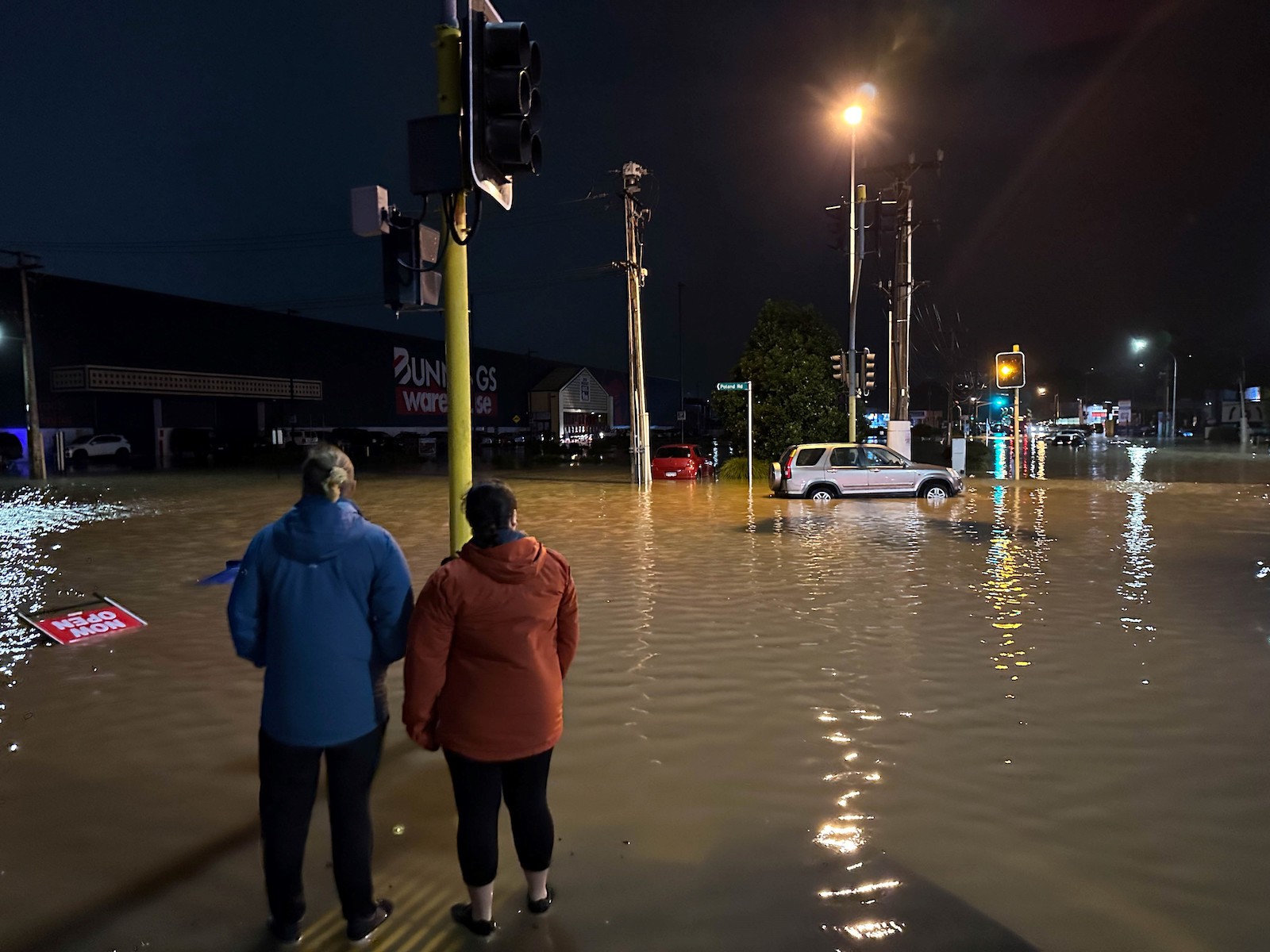New Zealand’s capital remained under a state of emergency Monday after the heaviest rainfall on record flooded the city. This month’s unprecedented dousing, which the prime minister attributed to climate change, has left four people dead and thousands more with damaged homes.
Hundreds of emergency personnel are converging on Auckland to assist even as forecasts call for another soaking Tuesday. Authorities have evacuated scores of people. “We have more adverse weather coming and we need to prepare for that,” Rachel Kelleher, the Auckland Emergency Management duty controller, said during a press conference, according to Reuters.
January typically ranks among New Zealand’s drier months. The country’s National Institute of Water and Atmospheric Research says 13 inches of rain has fallen so far this month, an amount usually received during the entire summer. That figure easily eclipsed the 8-inch record for the month set in 1986 and makes it the wettest month since record keeping began in 1909 – surpassing the 11 inches that fell in July of 1998. Another 3 to 5 inches could sop the area in coming days.
“It’s a 1-in-100-year weather event, and we seem to be getting a lot of them at the moment,” Prime Minister Chris Himpkins said in a news broadcast on TVNZ. “I think people can see that there’s a message in that … Climate change is real, it’s with us. We are going to have to deal with more of these extreme weather events in the future.
The flood follows deluges that soaked Canterbury in June and central New Zealand in August of 2021. Those floods, during one of the warmest winters in New Zealand’s recorded history, displaced more than 1,000 people.
Rising global average temperatures are associated with the widespread changes in weather patterns, which can intensify extreme weather events. That, in turn, can create a positive feedback loop of more violent storms, more intense heat waves, rising sea levels, and higher temperatures. Studies have shown that such events will likely become more frequent and more extreme with human-induced climate change.
California, for example, experienced record rainfall as a series of atmospheric rivers dumped more than 17 inches of rain on the state in just three weeks after Christmas. The storms killed at least 19 people and caused some $30 billion in damage from flooding, landslides, and problems. New Zealand can expect similar challenges. “When you have a significant rainfall event like this, rivers can rise quickly,” meteorologist Luis Fernandes said in a statement to CNN, “and roads can literally fall away or become covered and can cut off communities.”
According to research published in May 2022, the seas surrounding New Zealand are expected to rise sooner than previously thought. With the rate of that increase doubling over the past 60 years, the prognosis suggested that while the global sea level is expected to rise more than 19 inches by 2100, New Zealand, which is sinking, could see more than 3 feet of sea level rise. That will bring a higher risk of coastal storms, erosion, and flooding.




